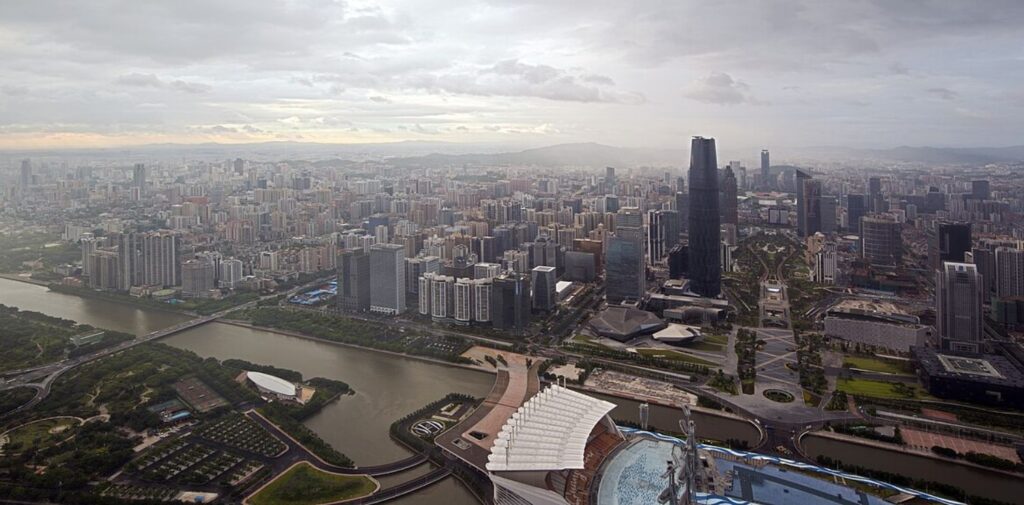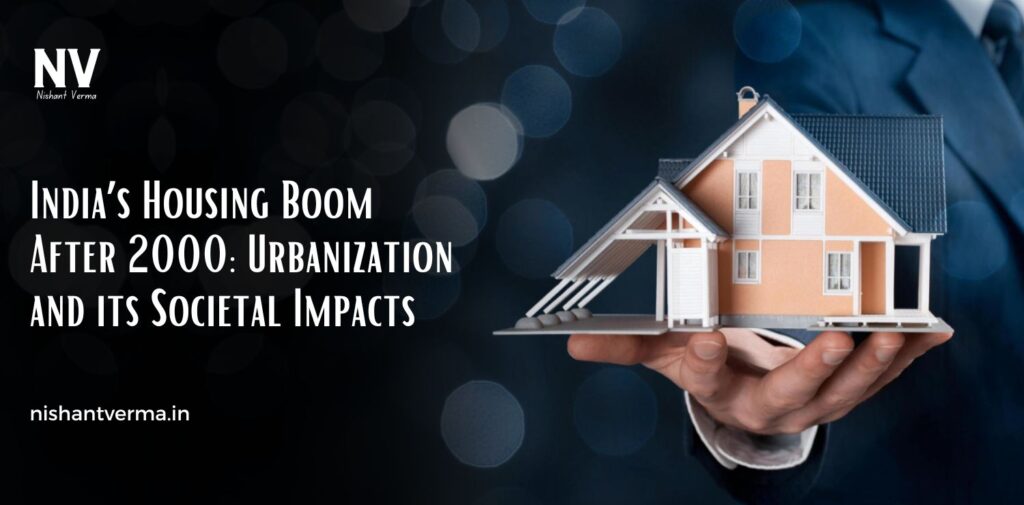India has seen tremendous growth and transformation since the turn of the 21st century. Among the many aspects of this transformation, the housing sector has experienced a boom like never before. Driven by rapid urbanization, economic growth, and changes in social dynamics, the demand for housing in urban areas has skyrocketed. This housing boom has reshaped the Indian landscape and significantly impacted society in various ways.
This article will explores the India Housing Boom After 2000, the factors that contributed to the boom, and the various societal impacts of this transformation.
The Rise of Urbanization
One of the primary drivers of India housing boom after 2000 is urbanization. Over the past few decades, millions of people have migrated from rural areas to cities in search of better job opportunities, education, and a higher standard of living. According to the 2011 Census, over 31% of India’s population lived in urban areas, a figure that has continued to grow rapidly.
Urbanization is directly linked to the demand for housing. As cities expand and new towns emerge, the need for homes has surged. The housing sector, in turn, has responded by constructing thousands of new residential buildings, ranging from affordable housing to luxury apartments. The boom is particularly evident in large metropolitan cities like Delhi, Mumbai, Bengaluru, Hyderabad, and Pune, where the demand for housing has led to a construction frenzy.

Factors Driving the Housing Boom
Several factors have contributed to the rapid expansion of the housing market in India. These factors, both economic and social, have created the perfect environment for the real estate sector to flourish.
a. Economic Growth and Rising Incomes
India’s economy has grown significantly since the early 2000s. The liberalization of the economy, coupled with the expansion of the IT and service sectors, has led to an increase in job opportunities, particularly in urban areas. As a result, people’s incomes have risen, and more individuals and families are now in a position to buy homes. The middle class, which has expanded significantly, is the largest segment of homebuyers.
b. Availability of Financing
The availability of home loans has also played a crucial role in the housing boom. The introduction of easy credit facilities and the lowering of interest rates have made it easier for people to buy homes. Banks and financial institutions have been offering home loans with lower down payments and longer repayment periods, making homeownership more accessible than ever before.
c. Government Initiatives
The Indian government has played an important role in encouraging home ownership through various initiatives. Programs like “Housing for All by 2022,” the Pradhan Mantri Awas Yojana (PMAY), and other affordable housing schemes have been launched to make housing more accessible to lower-income groups. These programs provide financial assistance, subsidies, and tax benefits, aiming to reduce the housing gap and cater to the needs of urban migrants and the economically weaker sections of society.
d. Changing Lifestyle Preferences
In addition to economic factors, there has been a shift in lifestyle preferences. As the aspirations of urban dwellers grow, people now prefer modern, well-designed, and well-equipped homes. The desire for amenities such as gyms, swimming pools, community centers, and 24/7 security has also led to the development of new housing complexes that cater to this growing demand. With urban life becoming more fast-paced, people are looking for comfort, convenience, and luxury in their homes.

The Growth of Smart Cities and Infrastructure Development
India’s housing boom is also closely linked to the development of smart cities and infrastructure projects. The government’s Smart Cities Mission, launched in 2015, aims to improve urban infrastructure and create modern, sustainable cities with the latest technologies. These developments have further fueled demand for housing, as people want to live in cities with better amenities, roads, water supply, sanitation, and healthcare.
Cities like Gurgaon (Haryana), Noida (Uttar Pradesh), and Navi Mumbai have emerged as hubs for new residential projects, offering modern housing options with all the amenities of a smart city. Infrastructure development, including improved connectivity through highways, metro systems, and airports, has also made living in these urban centers more attractive, further driving the demand for housing.
Societal Impacts of the Housing Boom
The rapid housing growth in India has brought about a wide range of societal impacts. While there are clear benefits, such as improved living standards and economic growth, there are also significant challenges that need to be addressed.
a. Increased Quality of Life for Urban Dwellers
One of the most obvious benefits of the housing boom has been the improvement in the quality of life for millions of urban residents. People now have access to modern housing, with better construction quality, design, and amenities. As cities expand, there has been a rise in gated communities, apartment complexes, and integrated townships, offering a more secure and comfortable living environment. For many families, owning a home has become a symbol of success and a way to secure a better future for their children.
b. The Challenge of Affordability
While the housing boom has created new opportunities, it has also led to increased property prices, making homeownership unaffordable for many, particularly in large cities. The rising demand for urban housing has resulted in soaring prices for both renting and buying homes, putting pressure on the middle and lower-income classes. Affordable housing remains a significant challenge, despite government initiatives aimed at bridging the gap.
For low-income families, especially migrant workers who flock to cities for jobs, securing decent housing remains a distant dream. While government schemes provide some relief, the overall affordability of housing in urban areas continues to be a major issue.
c. Urban Sprawl and Environmental Concerns
With the rapid construction of new homes and housing complexes, urban sprawl has become a major concern. Cities are expanding beyond their original limits, leading to the encroachment of agricultural land, forests, and green spaces. This uncontrolled expansion has put pressure on the environment, with increased pollution, waste, and a higher demand for resources such as water and electricity.
As cities grow, they also face challenges related to waste management, traffic congestion, and inadequate public transport systems. The housing boom has, in many cases, outpaced the development of the necessary infrastructure, making urban living increasingly difficult for residents.
d. Social Stratification
The rise of luxury housing developments has contributed to growing social inequality. In cities like Mumbai and Delhi, skyscrapers and lavish apartment complexes cater to the elite, while the working-class population struggles to find affordable living spaces. This divide has led to social stratification, where the rich and poor live in completely separate worlds, sometimes even within the same city.
While luxury homes offer a certain lifestyle, the lack of affordable housing options for the poor means that slums and informal settlements continue to grow, especially on the fringes of urban centers. These areas often lack basic amenities like sanitation, electricity, and water supply, which further exacerbates the divide between different social classes.

The Future of Housing in India
Looking ahead, India’s housing sector is likely to continue evolving, shaped by ongoing urbanization and government policies. To address challenges like affordability, environmental concerns, and social inequality, the government and real estate developers will need to focus on sustainable housing solutions that balance growth with the need for inclusivity.
The demand for affordable housing is expected to remain high, and there will likely be more emphasis on building green and energy-efficient homes. Additionally, the growing trend of remote work and lifestyle changes post-COVID-19 may lead to a shift in where people choose to live, with a growing interest in suburban and rural areas.
Conclusion: India Housing Boom After 2000
The housing boom in India after 2000 has been one of the most transformative changes in the country’s urban landscape. It has brought about higher living standards, economic growth, and the development of modern cities. However, it has also created challenges related to affordability, environmental sustainability, and social inequality.
As India continues to urbanize and modernize, finding solutions to these challenges will be key to ensuring that the benefits of the housing boom are shared by all sections of society. With the right policies and a focus on sustainability, India’s housing sector can continue to thrive, creating better living spaces for generations to come.




